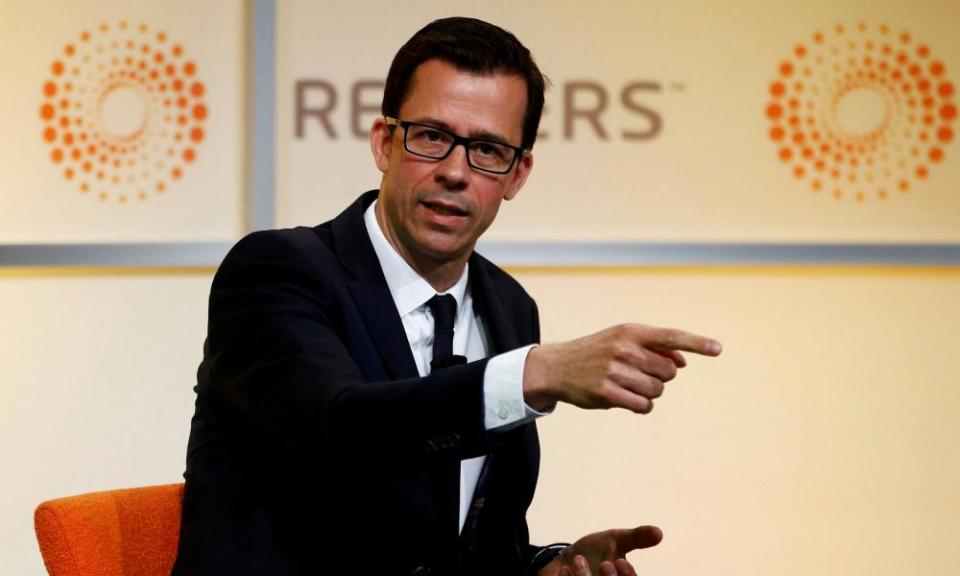Bank of England policymaker backs negative interest rates

Negative interest rates in the UK edged closer on Monday after a Bank of England policymaker warned the central bank would need extra firepower to boost the economy following the surge in Covid-19 cases.
In a gloomy assessment of the next few months, Gertjan Vlieghe, who sits on the monetary policy committee, the bank’s interest rate setting body, said the second wave of Covid-19 was holding back consumer spending and suppressing business investment, which would push unemployment higher.
Vlieghe said there was a strong risk that the broad-based recovery since the summer would suffer a setback and that the central bank would need to inject further funds into the economy before the end of the year.
What would happen to my mortgage?
If it’s a fixed-rate mortgage, a cut in interest rates would mean no change. Most households are on this type of deal – in recent years about nine in 10 new mortgages have been taken on a fixed rate.
If it is a variable-rate mortgage – a tracker, or a mortgage on or linked to a lender’s standard variable rate – the rate could fall a little if the base rate is cut. But the drop is likely to be limited by terms and conditions.
Older mortgages often have a minimum rate specified in the small print. Nationwide building society, for example, will never reduce the rate it tracks below 0% on mortgages arranged since 2009 – so if your mortgage is at base rate plus 1 percentage point, it will never fall below 1%. Santander specifies in some mortgages that the lowest rate it will ever charge is 0.0001%.
You will need to dig out your paperwork to see how low your mortgage rate could go.
Will new mortgages be free?
In Denmark, borrowers have been offered mortgages with negative interest rates. Mortgage customers with Jyske Bank were lent money at a rate of -0.5%, which meant the sum they owed fell each month by more than the sum they had repaid. There is no reason why UK lenders could not follow suit.
What happens to my savings?
UK savings rates have already been affected by the two base rate cuts in March and many easy-access accounts from high street banks pay just 0.o1% in interest.
Some banks already charge for current accounts, but it is unlikely that you will soon be forced to pay to keep small sums on deposit – despite the low base rate it is possible to earn 1% or more on a fixed-term savings account.
Wealthy savers are likely to be the first who would face a charge. In 2019, UBS started charging its ultra-rich clients a fee for cash savings of more than €500,000 (£449,000), starting at 0.6% a year and rising to 0.75% on larger deposits. And at Jyske Bank, similar charges apply.
What about my pension savings?
Negative interest rates are bad news for pension funds. If you have a defined contribution scheme you may find the predicted value on retirement falls, and you need to put more in if you have a target finishing date in mind. It is also a bad time to buy an annuity to provide a retirement income, as the returns on these fall when rates are negative.
But he warned that the bank’s scope for stimulating lending with cheap credit was beginning to wane and backed the inclusion of negative interest rates in Threadneedle Street’s armoury once technical issues were overcome.
In a speech titled “Assessing the health of the economy”, he cited “growing empirical literature” that suggests negative interest rates have not been counterproductive to the aims of monetary policy in other countries.
“My own view is that the risk that negative rates end up being counterproductive to the aims of monetary policy is low. Since it has not been tried in the UK, there is uncertainty about this judgment, and the MPC is not at a point yet when it can reach a conclusion on this issue.
“But given how low short-term and long-term interest rates already are, headroom for monetary policy is limited, and we must consider ways to extend that headroom.”
Vlieghe, an economist who joined the BoE from a City hedge fund, is one of four external members of the nine-strong MPC from business and academia. The others are Silvana Tenreyro, a professor at the London School of Economics, former investment bank economist Michael Saunders and Imperial College professor Jonathan Haskel. They have all made supportive comments on negative rates, though bank officials have proved to be more circumspect.
An investigation into the impact of negative rates is due to report in December.
Negative rates have been adopted by the European Central Bank and Bank of Japan, mainly to make it unprofitable for corporations to keep cash on deposit.
Evidence to the BoE shows that companies have chosen to increase investment rather than have their cash on deposit decline in value. But UK banks have argued that IT systems are not ready to process negative rate deposits and loans. There are also concerns that if negative rates apply to personal deposits, customers will withdraw funds and keep them outside the banking system.
Vlieghe said an examination of economic trends during the Covid-19 outbreak showed that much of the bounce-back could be attributed to pent-up demand from the lockdown. He warned that job losses could push the unemployment rate beyond the bank’s forecast of 7.5% by the end of the year.
“There is a tremendous challenge ahead. GDP and labour market indicators stand at levels that are below what has historically been the trough of a recession,” he said.
“Given that virus prevalence has been increasing again recently, it is likely to weigh more heavily on economic activity. Indeed, it appears that the downside risks to the economic outlook are starting to materialise. In my view, the outlook for monetary policy is skewed towards adding further stimulus.”

